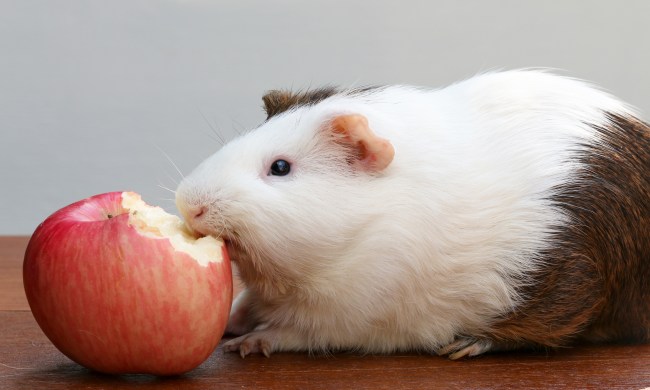Rabbits are social animals and love to spend time with other rabbits or their humans. Investing the time to train your rabbit is excellent for their development and enjoyment of life — and the bond between the two of you.
As intelligent beings, rabbits want to learn. Just as with a dog, exercising their brains is as important as exercising their bodies. And it’s fun!
You can even enhance your bunny’s quality of life by teaching him certain skills, such as potty training. A potty-trained rabbit can be trusted to roam about the house, giving them an abundance of space rather than being stuck in a cage.
Want to know more? Check out our guide on how long do rabbits live.

Rabbit behavior
To train your rabbit, you must first understand rabbit behavior. What motivates them? Does he love food, or is your rabbit more interested in your affection? These are the tools you can use to encourage your rabbit to perform different activities.
As prey animals, rabbits see, smell, and experience the world in a much different way than you. Rabbits are more attuned to danger and quicker to react and flee it. Even having their eyes mounted on the sides of their heads, like birds, means rabbits are built to scan their surroundings and identify potential threats. You’ll see proof of this as they shift their head position when you approach them. They have to: Although their peripheral vision is excellent, their central vision isn’t so great. Keep this in mind while training. If you startle or scare your rabbit, your training efforts won’t achieve much.
Timing
Short and sweet is the way to go when deciding how much time to spend on training your rabbit. Dedicate five to 10 minutes two to three times a day to training. Any longer, and you risk your rabbit’s losing interest. Keep training sessions positive and enjoyable. Don’t rush or have unrealistic expectations. Every rabbit is different, and giving yours space and freedom to learn at his own pace will ensure a happy rabbit.
Motivations
As mentioned above, finding your rabbit’s best motivation will enable you to train him effectively. You might already know their favorite treat, but if you’re unsure, slowly begin experimenting with new foods and see how they react. Most rabbits love shredded carrots!
Avoid using “bunny treats” from the store. Because you will be training often and giving these treats a lot during practice, too much of them could cause health issues. It’s best to avoid fruit treats for the same reasons. Things like carrots can be a great option. Other healthy treat options are:
- Basil leaves
- Dandelion leaves
- Parsley
- Kale
- Cilantro
No matter what treat you use, be sure to give it in pieces small enough to be eaten quickly. You don’t want to praise your rabbit for doing something only to lose momentum while he takes five minutes to eat an entire kale leaf.
At some point in your training, your rabbit will become a pro. When your rabbit is completing the tricks at a reliable rate, it’s time to start weaning him off the food treats. Slowly begin this process by giving affection every so often instead of a treat. Then increase the amount of nonfood praise over time.
Clicker training
In addition to praise and food, adding a clicker to your training can be beneficial. A clicker can precisely indicate to your rabbit the moment he is doing what you want. You can encourage him to do the trick, then click as soon as he does it and provide a treat or praise. This is especially helpful when you’re teaching behavior that requires your rabbit to be farther away from you. Any delay in reward can cause confusion, but the clicker can let him know he did a good job as you move to give him the treat. Spend five minutes on YouTube watching clicker-trained rabbits, and you’ll be convinced!
Context and locations
Context is everything. When thinking about what tricks you’d like to teach your rabbit, consider when and where these actions will occur. For example, if you’d like your rabbit to go to bed at a specific time every night, train that “trick” at the same time every night. All animals have a great sense of time, and soon your rabbit might even go to bed without your instruction. In contrast, if you’d like your rabbit to come when called, no matter the time or place, practice this trick at various times of the day and in many different locations.
As you begin training, try to eliminate distractions. At the beginning of training, remove all diversions such as other rabbits, other pets, or other people. As time goes on and your rabbit performs the tricks with regular success, you can begin to restore those distractions.
 Trick breakdown
Trick breakdown
Breaking down tricks will help you keep your rabbit from getting confused or overwhelmed. Consider the tricks you’d like to teach and how you could simplify them into smaller actions. Then take those smaller steps and slowly begin to teach your rabbit each step, building onto it as your rabbit learns and gains confidence. Be sure to reward every behavior you want your rabbit to repeat by giving him his motivation treat. Whether his treat is food or a pet, immediate praise helps ensure your rabbit completely understands what you want.
 Trick breakdown
Trick breakdown

